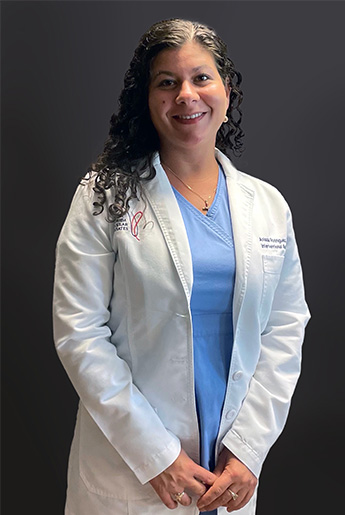What is Peripheral Artery Disease?
PAD is a condition where the arteries in your legs don’t receive enough blood. This can mean essential oxygen and nutrients don’t reach the legs and feet, causing discomfort. PAD typically starts in a single leg but can affect both legs.
Symptoms and Risk Factors
PAD most commonly causes leg pain and other symptoms, although almost 4 in 10 people don’t experience any leg pain.
The most prominent symptom of PAD is intermittent claudication, or leg discomfort (aching, cramping, or pain) that increases while walking and decreases when sitting or lying down. For some people, foot pain may disrupt their sleep.
PAD may also cause difficulty healing. Wounds on the legs or feet may be slow to heal because of inadequate nutrients and oxygen, which can lead to ulcers (wounds that don’t heal).
Non-healing wounds may eventually lead to tissue death, called gangrene. If untreated, gangrene can spread and require amputation of the foot or leg.
Peripheral Artery Disease Treatment Options
PAD treatment includes a multi-faceted approach. Medications and lifestyle interventions may be able to treat and prevent the worsening of the blood vessels. Revascularization may sometimes be recommended to enhance blood flow and prevent tissue damage. This may include angioplasty, a procedure that uses a tiny balloon to inflate and widen the blood vessel. A graft may also be used to bypass the artery and allow for better blood flow to the area. These minimally invasive procedures can be performed in our spa-like outpatient suite to ensure a comfortable, convenient experience.
Book Your Angioplasty, Stenting, or Atherectomy Appointment
Contact us today to schedule your appointment.
BOOK APPOINTMENTWhat are Angioplasty and Stenting?
Coronary stents are used during angioplasty procedures. A stent is a small, expandable metal mesh coil that is placed into a newly opened area of the artery to keep it from narrowing or closing.
During this procedure, a small incision is created in the groin to gain access to the artery. The physician will then thread a balloon-tipped catheter through the incision site and arterial system to the leg artery that is narrowed or blocked. Once the balloon is positioned under the plaque, it is inflated to break apart and compress the plaque and widen the blood vessel to improve blood flow. In certain cases, the physician may also insert a stent to keep the artery open following angioplasty.
Successful angioplasty procedures have great results. Approximately 60-70% of patients who undergo an angioplasty have patent vessels that remain open due to adequate blood flow to the legs for 2 years after the procedure.
The initial angioplasty failure rate for patients with leg artery disease is about 10%. Failure may occur when the catheter is unable to move through the blockage or a weakened artery collapses after angioplasty and cannot be kept open.
Not all artery diseases can be treated with angioplasty. For more advanced forms of peripheral artery disease or critical limb ischemia, more invasive procedures may be needed. Your provider will discuss the best way to treat your condition based on your circumstances.
What is Atherectomy?
Atherectomy is a minimally invasive procedure used to remove plaque buildup and open narrow or blocked arteries in those with peripheral artery disease (PAD).
During this procedure, your provider will utilize a catheter equipped with a sharp blade or laser to cut or scrape out the hard plaque.










